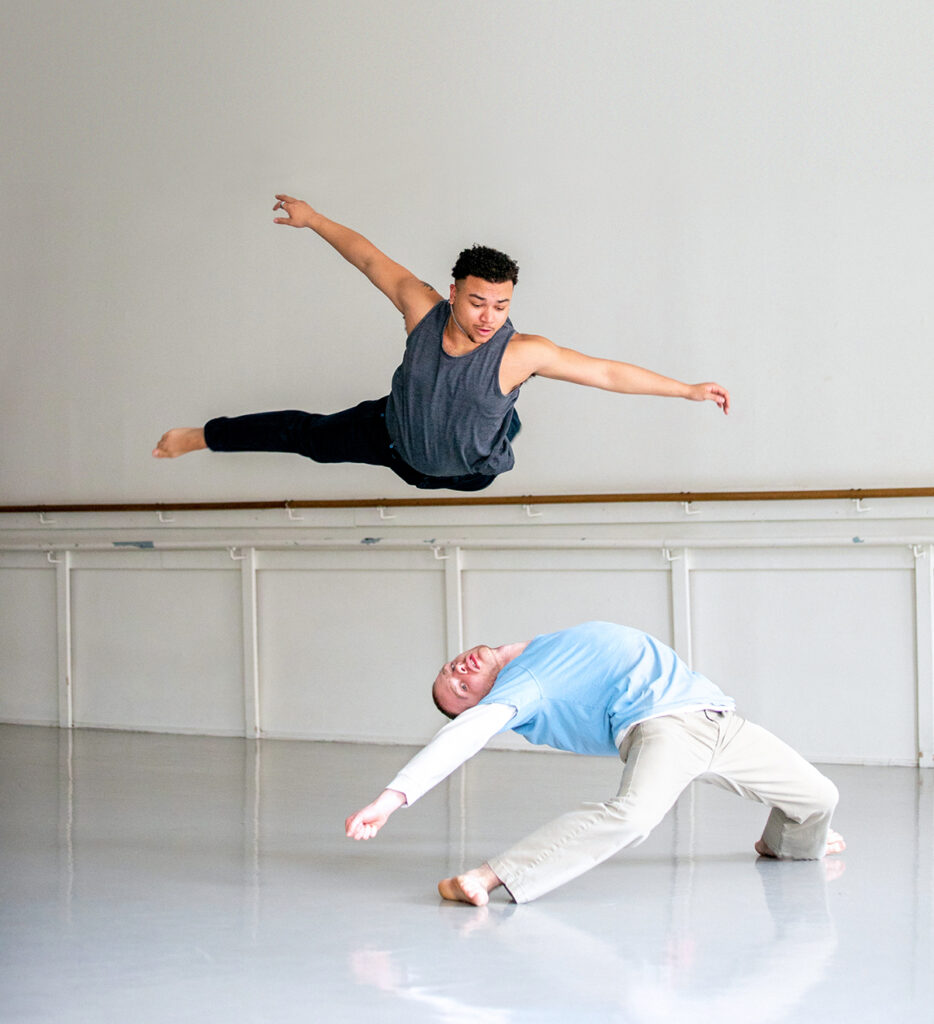Helping Students Prepare College Audition Solos
Earning acceptance into a college dance program requires more than solid technique and well-rounded training. Most schools ask students to present a brief solo as part of an audition—and this solo can carry a lot of weight for decision-makers. “The solo is when we get to see dancers being themselves,” explains Pamela Pietro, chair of the dance department at New York University’s Tisch School of the Arts. “They get to show us who they are and where they shine.”
What makes for an effective college audition solo? For starters, it will display a dancer’s assets while highlighting their individuality and artistry. Here are some other things to consider to set your high school dancers on the path to college audition success.
Skip the Tricks
Dancers’ technical skills will be assessed during the class portion of the audition. “For the solo, I encourage students not to worry about tricks, turns, and jumps,” says Lauren Gebhart, lead dance teacher at Burlington County Institute of Technology Academy of Performing Arts, an audition-only magnet high school in Medford, New Jersey. “I tell them, ‘Feature movement that feels true to your body and allows you to tell your story and express yourself as an artist.’ ”
Pietro feels that an overreliance on tricks hinders her in seeing the person behind the performer. “When a solo is nothing but tricks, I lose the dancer’s essence,” she says. “I start to wonder, ‘Did someone tell them to do that, because they thought that’s what would get them in?’ ”

Even when helping a student prepare for a more traditional solo, such as a classical ballet variation, try not to focus only on big, flashy moves. Instead, work to showcase artistic interpretation, musicality, and performance quality. These aspects can give adjudicators a sense of what else a dancer has to offer beyond pure technique.
Do Your Research
“Dancers need to know what type of program they’re auditioning for,” says Kehinde Ishangi, associate professor and chair of the audition committee for the School of Dance at Florida State University’s College of Fine Arts. “Auditions aren’t only about talent. We’re looking for people who are a good fit for our world.”
Ishangi recommends researching each program and, if necessary, adjusting audition materials accordingly. “Who’s on faculty? What styles and genres do they teach? Who have they worked with? How do they move?” she asks. “For the solo, it’s a balance between showing what you do well and showing that you understand the vocabulary of the school.”
Could that mean students need to prepare more than one solo? Depending on the breadth of their applications…perhaps. “If a student is pursuing a certain track, like commercial dance, they’ll probably be able to use the same piece at every audition,” Gebhart says. But if they’re interested in more than one genre, having multiple solos ready could be a smart choice.

Finally, make sure your dancer is auditioning in a style the school actually teaches. Ishangi recalls a dancer who presented a tap solo; tap isn’t in the curriculum at FSU. “This dancer did make it through,” she says, “but only because her other components were really good.” However, an ill-conceived solo could be enough to drop a student from a “maybe” to a “no.”
Put in the Work
“Helping dancers figure out how to best showcase their talent takes time,” Pietro says, “and it takes real collaboration between teacher and student.” Start early and check in often to ensure that dancers head to auditions feeling confident, comfortable, and ready.
Gebhart’s students take an improvisation and composition course in the spring of their junior year. “The solo they create during that class becomes the framework or the jumping-off point for their college audition solo,” she says. Dancers refine and trim the piece over the summer and at the start of senior year. Once they’ve applied to schools and have their audition dates, Gebhart meets with each student one on one for extra coaching. “We want the solo to be clean and feel fresh,” she says. “Also, if I think a specific program is looking for certain things, I can make sure those elements are there.”
Do students have to choreograph their own solos? It’s usually not a requirement—but Ishangi and Pietro both say they take notice when a solo is listed as self-choreographed (especially when the work shows promise). Composition is a big part of college dance training. That said, it’s most important that a solo present the dancer well. “If a student’s choreography is cliché or their technique isn’t solid enough to do what they’re trying to do, give them strong, loving advice,” Ishangi says. “Frame it as, ‘This is what will make you look your best.’ ”

The Bottom Line
As you prep your students’ audition solos, remember that schools aren’t just looking for ability—they’re looking for potential. Show each school how your students might fit into their program, and that there’s space and desire for growth. “The dancers who come to us on the first day aren’t the same people as the dancers who graduate,” says Pietro. “We want to be part of their trajectory, and that starts at the audition.”
The post Helping Students Prepare College Audition Solos appeared first on Dance Teacher.